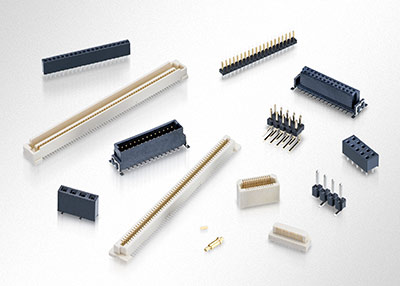Importance of Insulation Resistance of Electronic Connectors
Electronic connectors, as a bridge for signal and power transmission between electronic devices, have insulation resistance, which is a key indicator for measuring electrical isolation performance. The insulation resistance directly determines whether the connector can effectively prevent current leakage under long-term operation, ensuring the purity of signal transmission and the safety of the electrical system. High insulation resistance means better electrical isolation, which can effectively reduce energy loss and interference, and improve the stability and reliability of the entire electronic system.

Characteristics of insulation resistance of wire-to-board connectors
As an important component connecting cables and printed circuit boards (PCBs), the insulation resistance characteristics of wire-to-board connectors are particularly critical. Such connectors are usually designed with a precise insulator structure and use high-performance thermoplastic or thermosetting plastic materials to ensure that stable insulation performance can be maintained in high-density, high-frequency signal transmission environments. The insulation resistance of wire-to-board connectors is not only affected by the characteristics of the material itself, but is also closely related to its structural design, contact layout, and installation process.
Dielectric Strength: The Connector’s Electrical Safety Barrier
Dielectric strength, also known as breakdown voltage, is the ability of a connector to withstand high voltage without electrical breakdown. It is a key parameter to measure the electric field strength of the connector insulation material. In electronic devices, connectors often face complex electromagnetic environments. High dielectric strength can effectively prevent electrical breakdown caused by voltage fluctuations or instantaneous high voltage, protecting the circuit from damage. For wire-to-board connectors, insulators with high dielectric strength can not only improve the electrical safety of the connector, but also extend its service life and reduce system downtime caused by electrical failures.
Test methods for insulation resistance and dielectric strength
To ensure that the insulation resistance and dielectric strength of the connector meet the design requirements, professional testing equipment is usually used for measurement. The insulation resistance test applies a certain voltage, measures the current flowing through the insulator, and calculates the resistance value. The dielectric strength test gradually increases the voltage until the insulator breaks down, and records the voltage value at this time as the dielectric strength. These tests not only help to screen qualified connector products, but also provide data support for connector design and material selection.
Strategies for Optimizing Connector Insulation Performance
Improving the insulation resistance and dielectric strength of the connector requires material selection, structural design, manufacturing process and other aspects. Selecting high-performance insulating materials, such as special plastics with excellent heat resistance, chemical corrosion resistance and high insulation strength, is the basis for improving insulation performance. At the same time, optimizing the structural design of the connector, such as increasing the thickness of the insulator and improving the layout of the contacts, can also effectively improve the insulation resistance and dielectric strength. In addition, strictly controlling the manufacturing process to ensure that the insulator is defect-free and the contact plating is uniform is also the key to ensuring the insulation performance of the connector.
The insulation resistance and dielectric strength of electronic connectors and wire-to-board connectors are critical to ensuring electrical isolation, signal transmission quality, and electrical safety of electronic devices.









